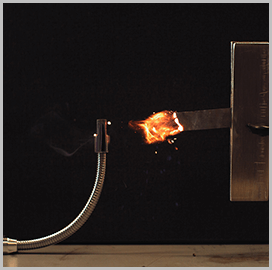Johns Hopkins Applied Physics Laboratory researchers have developed a new thermal battery that uses nickel-aluminum heat pellets and provides higher power density despite having a smaller footprint.
The research team collaborated with the U.S. Navy’s Surface Ship Weapons program and the Office of Naval Research to fine-tune their design and make the technology 60 percent smaller than most thermal batteries, Johns Hopkins APL said Tuesday.
“To make a smaller but more powerful battery, we had to change the electrolyte and cathode materials within it, and advancements in cathode chemistries haven’t changed for several decades,” said Yo-Rhin Rhim, a materials scientist in APL’s Air and Missile Defense Sector and the principal investigator on the battery project.
“To change those chemistries, we had to take a step back and adjust the heat source,” she added.
The researchers experimented with a cheaper heat source—aluminum foil dipped in nickel—to activate the battery.
An electric igniter activates the nickel-aluminum heat pellets to melt the electrolytes, activate the battery and power the system it is attached to.
In February, the APL team completed a series of testing for the thermal battery in collaboration with Sandia National Laboratories.





